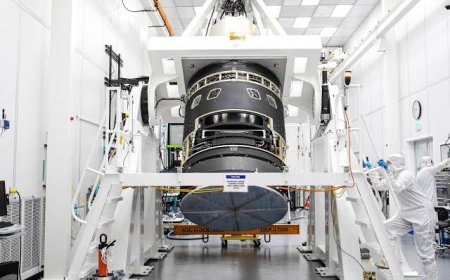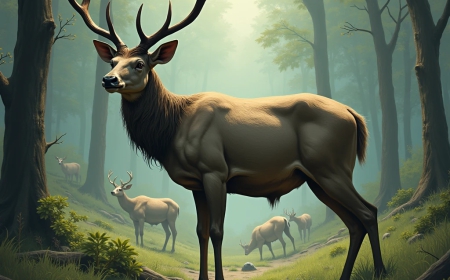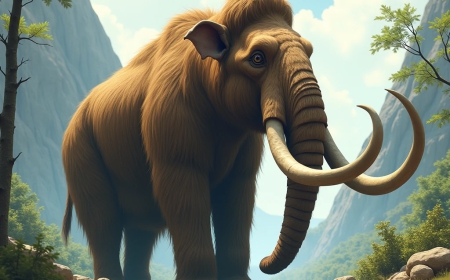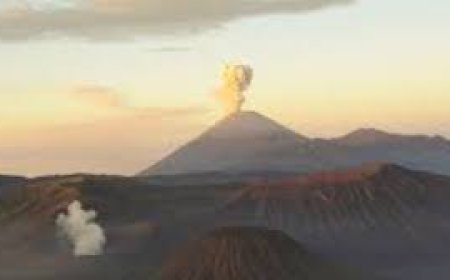Resurrection of the Woolly Mammoth: New Possibilities in Scientific Progress and Environmental Change
The effort to bring the woolly mammoth back to life is a monumental step in the realm of scientific innovation and genetic engineering. As researchers from various institutions make progress in this ambitious venture, it could signal the beginning of a new chapter in both conservation and environmental science. This process involves not just the recreation of an extinct species, but also an effort to address some of the urgent challenges posed by climate change. Below is an exploration of this groundbreaking project, its implications, and the potential benefits and challenges it brings.

The Woolly Mammoth: A Creature of the Ice Age:-
The woolly mammoth, a species closely related to the modern-day elephant, roamed the Earth during the Pleistocene Epoch, around 400,000 years ago. With their large, shaggy coats and long, curved tusks, they were well adapted to the cold, harsh climates of the Ice Age. Mammoths lived across a wide range of environments, from North America to Europe and Asia, until they went extinct roughly 4,000 years ago. Many believe that the extinction of the mammoth was due to a combination of human hunting and climate change, which altered their habitat.
Mammoths have become iconic symbols of prehistoric life, often portrayed in popular media and in scientific research. Yet, the question of their extinction and whether they can be brought back has long intrigued scientists. The idea of de-extincting species, known as "de-extinction," is not new, but with advancements in genetic science, it has become increasingly feasible.
The Science Behind Mammoth Resurrection:-
At the core of the project to bring back the mammoth lies the field of genetic engineering. The genetic material of the mammoth has been preserved in frozen permafrost, particularly in Siberia, where mammoth carcasses have been found remarkably well preserved in ice. Using these remnants, scientists are attempting to reconstruct the mammoth's genome, a task that has proven incredibly difficult due to the degradation of DNA over thousands of years. However, in recent years, technology has improved, and it has become possible to sequence ancient DNA with greater accuracy.
The process involves identifying and isolating the specific genes responsible for traits like the mammoth’s thick fur, fat storage, and cold resistance. These genes are then inserted into the DNA of a closely related species—the Asian elephant. By doing this, scientists are creating an embryo that possesses the traits of a mammoth while still maintaining the biological framework of an elephant.
This method, known as CRISPR-Cas9, is a powerful tool for editing genes. It allows scientists to make precise changes in the DNA of living organisms, and in the case of the mammoth, it is being used to “edit” the genes of Asian elephants. The goal is to create a hybrid that closely resembles the woolly mammoth in both appearance and behavior.
Why Bring Back the Mammoth?
The reasons for attempting to bring back the mammoth go beyond the realm of scientific curiosity. There are practical environmental considerations that are driving this research forward. One of the main motivations is to help combat climate change, particularly the warming of the Arctic.
Mammoths played a crucial role in maintaining the delicate balance of the ecosystems in which they lived. They were herbivores that grazed on grasses, and their large size allowed them to push down shrubs and trees, which prevented the overgrowth of vegetation. This grazing behavior helped maintain the tundra environment, allowing grasses to thrive and, in turn, maintaining the permafrost layer that holds vast amounts of carbon dioxide.
The absence of large herbivores like mammoths has led to the overgrowth of shrubs and trees in the Arctic, a process known as "shrubification." This change has altered the landscape, reducing the amount of grasses that can store carbon and contributing to the warming of the region. By reintroducing mammoth-like creatures to graze and trample the land, scientists hope to restore the ecosystem to its original state, which could help sequester carbon and slow down the melting of permafrost.
Additionally, the return of mammoths could have cascading effects on other species in the ecosystem, including predators, smaller herbivores, and the plants themselves. These changes could potentially create a more stable environment that benefits a wide range of species.
The Ethics of De-Extinction-
While the potential environmental benefits are exciting, the idea of de-extincting the mammoth also raises ethical questions. The primary concern is whether it is right to bring back a species that has been extinct for thousands of years. Critics argue that the focus should be on conserving current species and ecosystems rather than attempting to resurrect species from the past.
Another ethical consideration is the welfare of the animals involved. While the hybrid creatures would have mammoth-like traits, they would still be genetically Asian elephants in many respects. This raises concerns about the health and well-being of these creatures, as they might not be fully adapted to their new environment. There are also questions about how they would interact with existing ecosystems and whether they could be integrated without causing harm to other species.
Furthermore, there is a debate about whether this technology should be used to revive other extinct species, especially those that went extinct due to human activity, such as the passenger pigeon or the dodo. Some argue that de-extinction could become a distraction from the more pressing issue of conserving endangered species today.
Technological Challenges and Risks:-
The process of creating a mammoth hybrid involves several technological hurdles. Despite advancements in genetic engineering, it is still not certain that scientists will be able to produce a viable mammoth embryo. The DNA of the mammoth is not perfectly preserved, and there are still significant gaps in the genetic code that need to be filled.
Even if the embryo is successfully created, there is no guarantee that it will survive. The genetic material from ancient species may not be fully compatible with the DNA of living organisms, leading to potential health problems or even failure to develop properly.
Additionally, cloning or gene editing does not always lead to predictable results. While the hope is to create an animal that closely resembles the mammoth, it is possible that the hybrid creatures will be different from what scientists expect. The process of trial and error could take many years and may not always result in success.
The Timeline for the Mammoth's Return:-
According to researchers, the first viable mammoth hybrid could be born within the next two years. However, this timeline is highly dependent on overcoming the technical challenges involved in gene editing and embryo development. While scientists are optimistic, the process of creating a mammoth hybrid is still in its early stages, and there is much work to be done.
One of the key challenges will be finding a suitable surrogate mother for the hybrid embryo. Asian elephants, while closely related to mammoths, have different reproductive systems, and it is unclear whether an elephant will be able to successfully carry and give birth to a mammoth hybrid.
Despite these challenges, the project has made significant progress in recent years. The idea of seeing a mammoth-like creature once again roaming the Earth is no longer just a fantasy but a real possibility.
Conclusion: A New Era of Conservation?
The attempt to bring back the woolly mammoth is an exciting, albeit controversial, scientific endeavor. The potential benefits, particularly in combating climate change and restoring ecosystems, are enormous. However, the ethical considerations, technological hurdles, and uncertainties surrounding the project also demand careful thought.
As the project moves forward, it will undoubtedly spark debate and raise important questions about the role of science in shaping the future of our planet. Whether or not the mammoth is successfully revived, this work represents a new era in genetic engineering and conservation, one that could change the way we think about life, extinction, and the environment itself.
The next few years will be crucial in determining whether this ambitious project can live up to its promises. For now, the world watches closely as scientists take steps toward resurrecting one of history’s most iconic creatures.















































